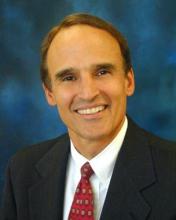The Affordable Care Act’s health insurance exchanges have provided coverage for the previously uninsured, two health system executives said April 7 at the ninth World Health Care Congress.
About 30,000-40,000 new enrollees to Kaiser Permanente’s California health plans were previously uninsured, said Dr. Robert Pearl, executive director and CEO of the Permanente Medical Group.
"When you get coverage, you start to get health care, which from my perspective is a good thing," he said. Although delivering more care may drive costs up initially, in the long run, it will help create a more cost-effective and higher-quality system.
Kaiser has begun reaching out to those newly insured and found that many need immediate care for chronic conditions, Dr. Pearl said. But having more patients covered by insurance also aligns with Kaiser’s mission of focusing on preventive care, he said.
The exchanges will drive many changes in the health care system, he said. Among them is making health care more integrated, both vertically and horizontally.
The ACA is forcing a realignment of health care, according to Scott E. Streator, vice president for the health insurance marketplace with CareSource – a nonprofit provider of Medicare and Medicaid managed care plans and low-cost insurance plans – based in Dayton, Ohio. He described it as at least a 3-year process. Costs will likely go up in the first year because so many previously uninsured patients will use new benefits. In the second year, skeptics are likely to sign up through the exchanges, bringing more patients, but also potentially higher costs. Savings from coverage likely will not materialize until 2017 – a few years after the first enrollees initially received benefits, he said.
CareSource has gained about 30,000 new enrollees since Oct. 1, Mr. Streator said, adding that about 80% have paid their premiums and about 80% have received a subsidy of some sort.
About 60% were previously uninsured, Mr. Streator said.
Other organizations have recently issued data showing that the number of uninsured seems to be declining. The Robert Wood Johnson Foundation estimated that of the 7 million Americans who have supposedly signed up for a plan through the federal or state exchanges, 5.4 million were previously uninsured. The foundation said that there had been an almost 3% drop in the rate of uninsured since September.
And a Gallup poll released April 7 showed that the rate of uninsured Americans is at its lowest point since late 2008. The data are based on interviews with more than 43,500 adults from early January through late March.
The Gallup poll noted that just under 15% of Americans were uninsured in late March, down from 18% in August 2013. The rate has fallen consistently since open enrollment for the exchanges began in October, with a big drop from early March (15.8%) to the end of the month when enrollment closed (14.7%).
On Twitter @aliciaault


